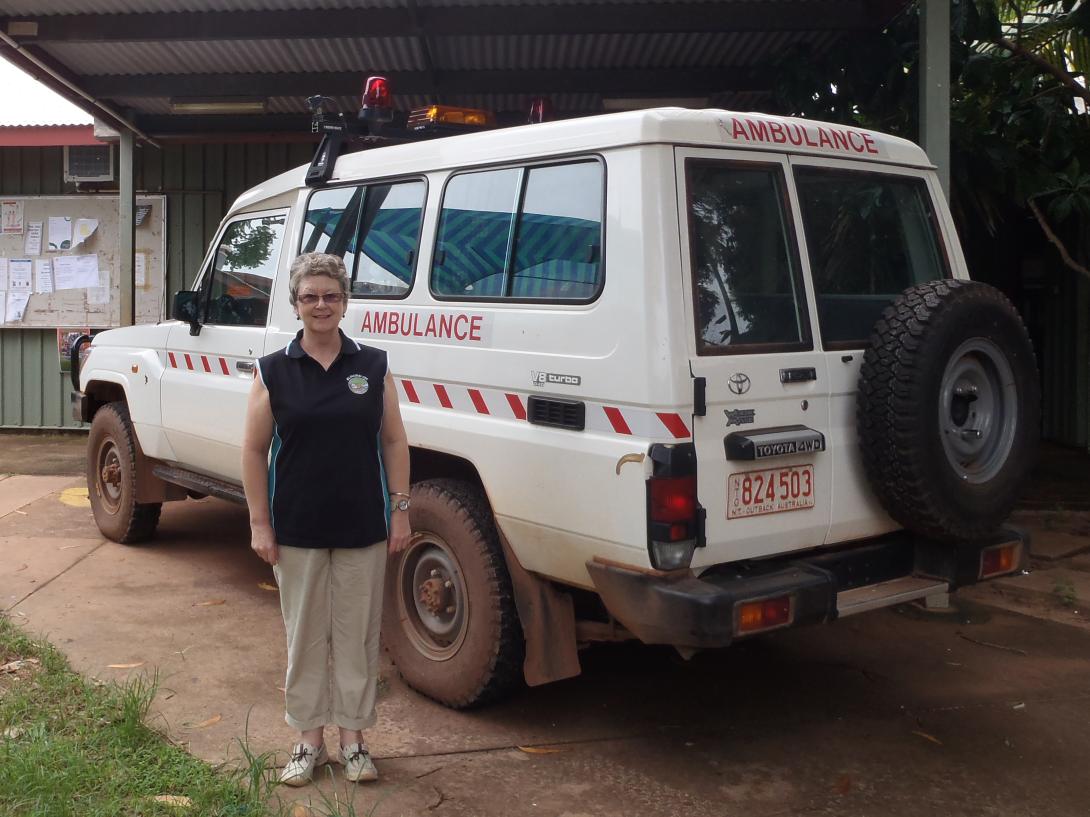
Mary-Anne talks about her experience working in Indigenous healthcare, working in Gapuwiyak, Milingimbi, Kalkarindji and Tennant Creek. This article originally appeared in HealthScoop Magazine on 14/10/13.
While I’ve been a Dental Therapist for 25 years, it was October 2009 when I started a new journey that continues to this day. My journey has taken me to places in Australia I would otherwise never have been able to visit and given me experiences I would never have imagined…
My introduction to Indigenous and remote health was in Gapuwiyak, 250kms west of Nhulunbuy in East Arnhem. Since then, I’ve also worked in Milingimbi, an island community also in East Arnhem as well as the community of Kalkarindji, 500kms south west of Katherine. In May this year, I spent two weeks working in the Department of Health dental truck in Tennant Creek. Four communities, all quite unique and seemingly a world away from my regular life in a town on the NSW/Victorian border – Tocumwal – three hours north of Melbourne.
I heard about the Close the Gap program and the Remote Area Health Corps (RAHC) not long after the initiative began. I’m fairly adaptable and resourceful so I applied without really knowing much about what the job would entail.
I thought ‘How different can this dental work be?’. Well, I soon found out when I went on my first placement and discovered what ‘remote’ really means. To get there it took a three-hour drive to Melbourne, four-hour flight to Darwin, a day in Darwin for the Cultural Orientation Training and briefing, a ninety minute commercial flight to Nhulunbuy/Gove, then a 30 minute flight in a six-seat Cessna to Gapuwiyak.
My placements have educated me about the need for oral health and general health services in the more remote parts of our country. I found the scale of the work to be challenging sometimes but this was offset by the knowledge that whatever help I could give was needed and appreciated by the communities.
My eyes have been opened to a whole new world of Aboriginal culture. The more I have learned the more I realise how much more there is still to know and understand. At first, I found it disconcerting that English was not the first language spoken by most people around me in the community. In fact, most Aboriginal people there, even the children I talked to, could speak three, four or even more languages. I felt most inadequate but the kids were happy to teach me a few key words although they did have a giggle at my pronunciation attempts.
Probably the best aspect of remote work has been the people. I have met so many friendly, interesting people ranging from the community members and patients to the other Dental Assistants and RAHC, Department of Health and local clinic teams I work with. These lovely people make all the difference when I am a long way from my home and family.
Working in a remote community can be many things – challenging, exhilarating, exhausting, exciting and fulfilling. I’ve gained so much through my placements and I’m gratified that my skills and professional experience can contribute to making a difference.
There is still a great need for dental and general health professionals to improve health outcomes for Indigenous Australians and I am looking forward to continuing my work in remote Indigenous communities.
